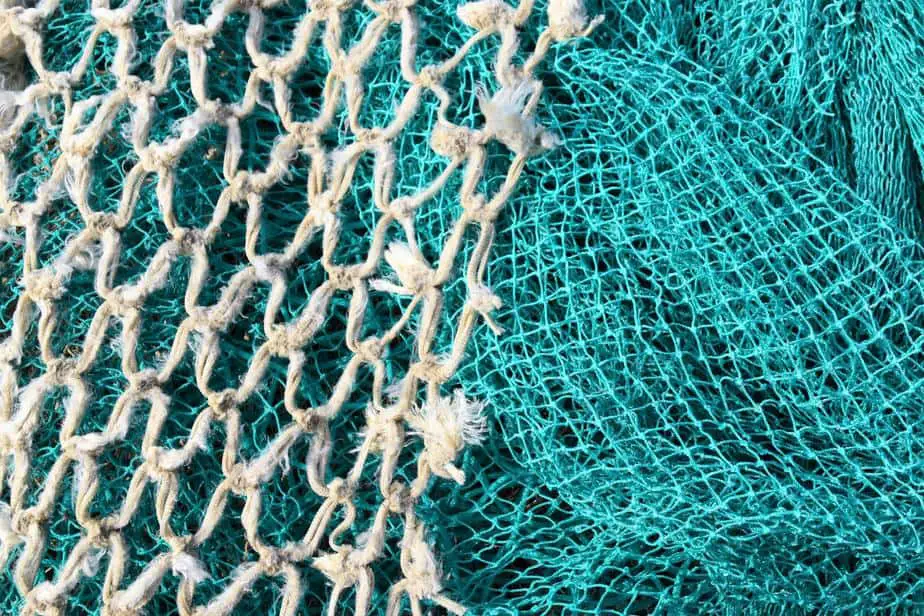Having a dive knife with you is kind of like wearing a seatbelt when driving. You hope you never need to use it, but you’ll be glad you were wearing one in case an accident does occur. The reality is that you’ll probably go on dozens or even hundreds of dives without ever needing to use your dive knife, making them seem kind of pointless.
Do divers need a dive knife or some other cutting device? Yes, because if you ever get entangled in rope or kelp, you’ll be glad you had one with you. If you rarely ever use your dive knife but the one time you do it ends up saving your life or someone else’s, then that singular event makes it worth it, don’t you think? Some divers don’t own a dive knife and rely on other divers to have one, but if you want peace of mind, it’s best to have your own.
If you learned how to scuba dive in tropical waters, you might never have needed a dive knife before. Even if you think you won’t ever get entangled, dive knives are highly versatile. They can be used to clean up underwater garbage, free trapped animals, or free other divers. Plus, a decent dive knife can be yours for under $50 and they don’t take up much space, so there are plenty of good reasons to wear one at all times. Read on to learn more about a dive knife’s benefits.
What are dive knives used for? Top benefits:
Escaping entanglement
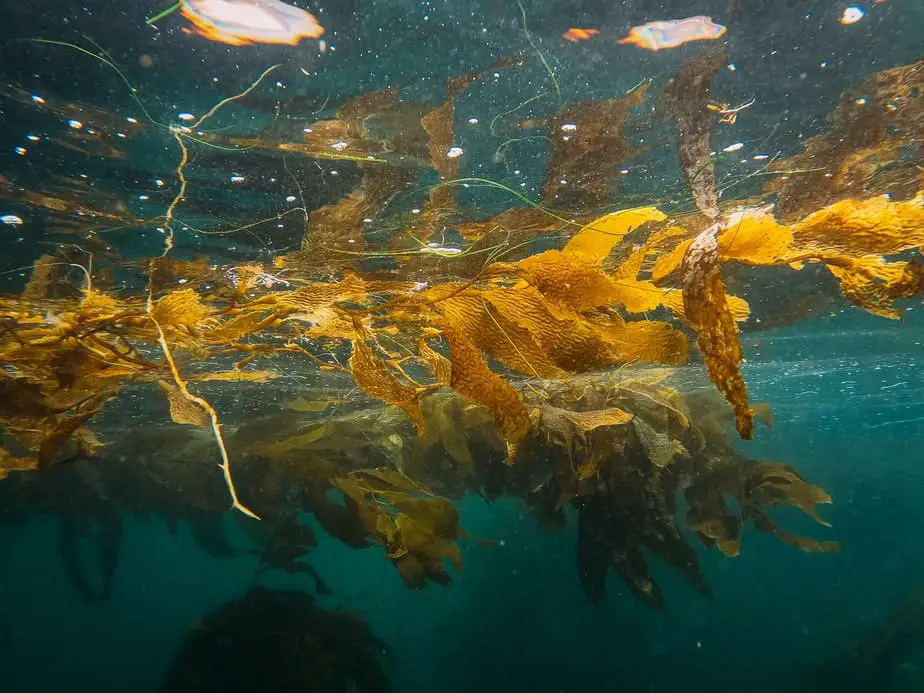
With all of the protruding equipment a diver carries, it’s possible that one day, a net, rope, or string of kelp could snag on a diver’s equipment and entangle them. Thankfully, this situation is highly uncommon, particularly to recreational scuba divers.
However, as unlikely as it is, we like to plan for the worst. All you need is for this to happen one time and it could cost you your life. Having a cutting tool on hand means you can free yourself or a dive buddy who is in trouble.
The water visibility isn’t always great, and you never know when an underwater rope, abandoned net, or aquatic plant life might sneakily snare you. You are most likely to get entangled in a plastic mono-filament fishing line, which is difficult to see, making it a possibility even in clear waters.
Despite being such a thin string, it is impossible to break by hand. The fine string can easily wrap around your equipment, legs, or arms. If you are caught in one, your only option is to cut it with a dive knife or trauma shears.
Some divers don’t have their own cutting tool because they think they will never get entangled or their dive buddy will free them. However, every second counts in an emergency situation, and rather than rely on fate, why not take matters into your own hands and keep a dive knife within arm’s reach?
Freeing trapped animals
You’ve seen videos of people helping sea turtles, seals, manta rays, sharks, and even whales get free from a net or rope that has been wrapped around them for so long that it has lacerated their flesh. Again, there’s no way you can free these animals with just your bare hands. A dive knife ensures you can help release them.
A word of caution, however. The larger the marine life, the more dangerous it is. Most people are already terrified of sharks, so we don’t need to beat that point to death. However, despite whales being friendly giants, they are so much larger than us that they could unintentionally kill a diver just with a flick of a tail. Also, manta rays are infamous for causing the death of Steven Irwin, the Crocodile Hunter. It is up to you to determine whether you think it’s worth the risk or not to approach these animals.
Diving in overhead environments
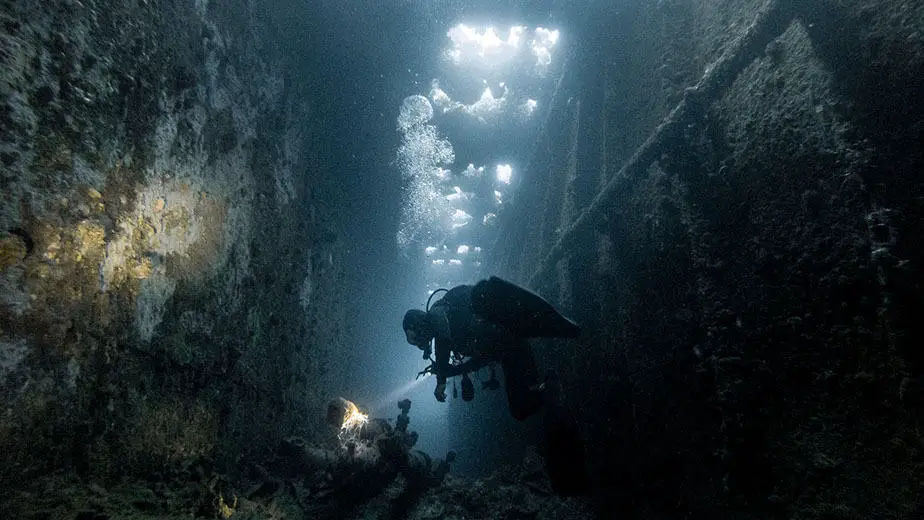
If you’ll be cave or wreck diving, then a dive knife is absolutely an essential piece of equipment. Diving in overhead environments drastically increases your risk of being entangled due to how cramped the space is.
For instance, when wreck diving, old ropes or cables are a constant hazard that can easily snag around a diver and their equipment. No sensible wreck diver would enter a wreck without their trusty dive knife by their side.
Similarly, for cave diving, underwater plant growth or the guidelines used for navigation can be a tangling hazard, particularly when visibility is low. Cave diving is already one of the most dangerous types of diving you can do, so why make it even riskier by not having a suitable dive knife?
Miscellaneous underwater work
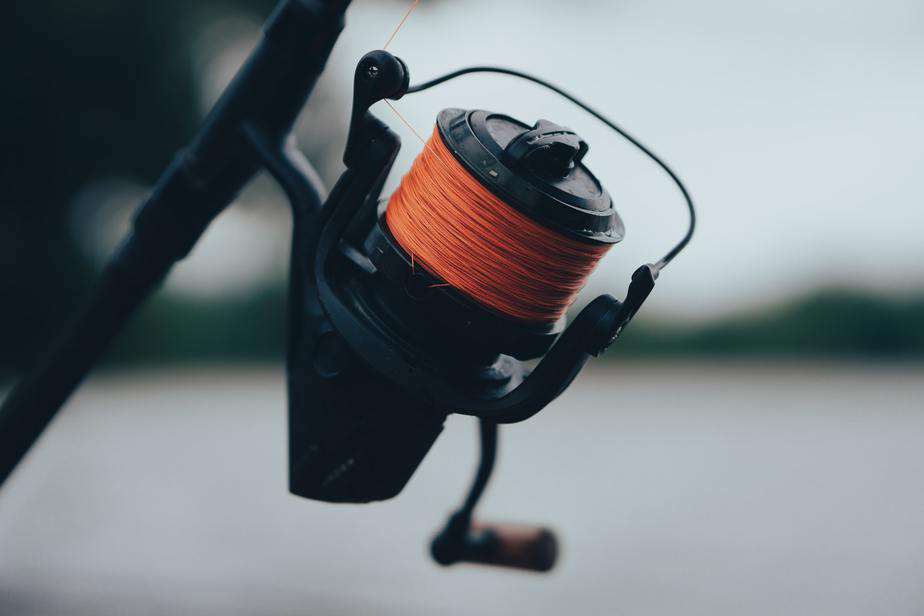
If you have a boat of your own, a dive knife can help with miscellaneous underwater jobs to make your life easier. For instance, you could scrape the barnacles off the underside of the boat, cut rope that has tangled up the propeller, and so on.
More often than not, the bottom of a dive knife is designed so that you can safely bang it against your tank to get the attention of nearby divers. This can also be used as a defensive tactic if you feel a shark is eyeing you suspiciously.
A knife can also be used defensively against an unexpectedly difficult current. Knives can be used to anchor yourself on the seabed when your hands can’t get a good grip.
As you can see, having a dive knife with you is just useful.
What dive knives aren’t used for
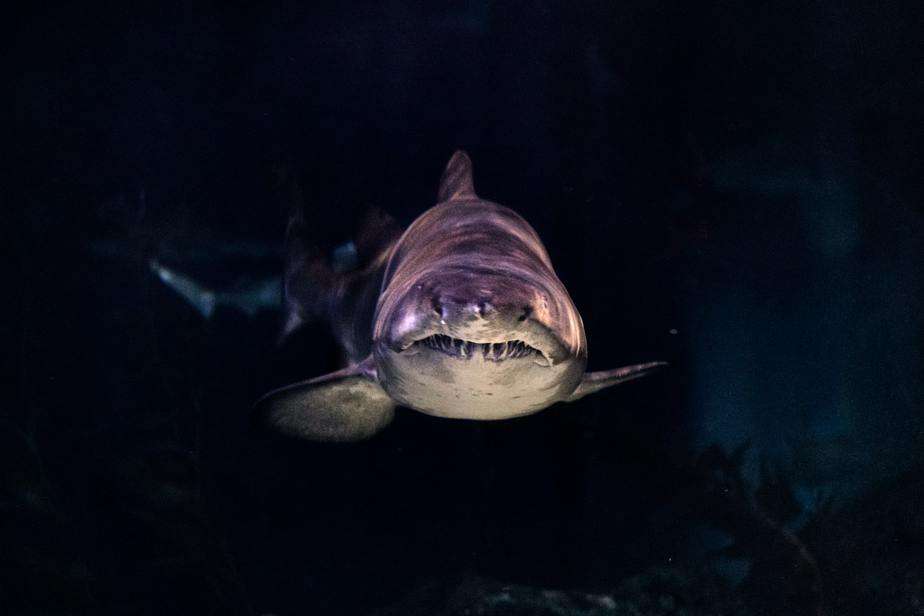
Let’s get some common myths and misconceptions out of the way.
No, you’re not going to need a dive knife for epic underwater fights like in a James Bond movie. A dive knife is not intended to be a weapon, and you will not be fighting off any bad guys or large marine life such as sharks. You could have a machete with you and it wouldn’t do much against a Great White, as Quint from Jaws can attest to.
Yes, a dive knife is sharp and can cause injury, but dive knives are designed for utility and not for attack or defense. For instance, the tip of a dive knife is often blunt to reduce the chances of accidentally stabbing oneself.
Also, dive knives simply aren’t necessary for “defense.” The majority of dangerous encounters with aquatic life were due to divers provoking them, unintentionally or otherwise. From your perspective, you may just be trying to get a closer look, but from the animal’s perspective, it might think it’s getting stalked.
As long as you exhibit sensible behavior underwater, such as by keeping your distance, keeping your hands to yourself, and not feeding the animal, you should never feel the need to take out your dive knife for defensive purposes.
Plus, if you do attack an animal with your knife, chances are you’ll only give it an artificial wound but you’ll have enraged it in the process. A shark, for instance, will more than likely just brush it off and take a chomp out of you in retaliation.
Instead, you can discourage a shark from attacking by never letting it get behind you, staying with a group of divers, making loud noises, or hitting its sensitive nose if it gets too close. Dive knives should only be used for cutting ropes, nets, lines and aquatic plants, not for attacking or defending.
Dive knife disadvantages
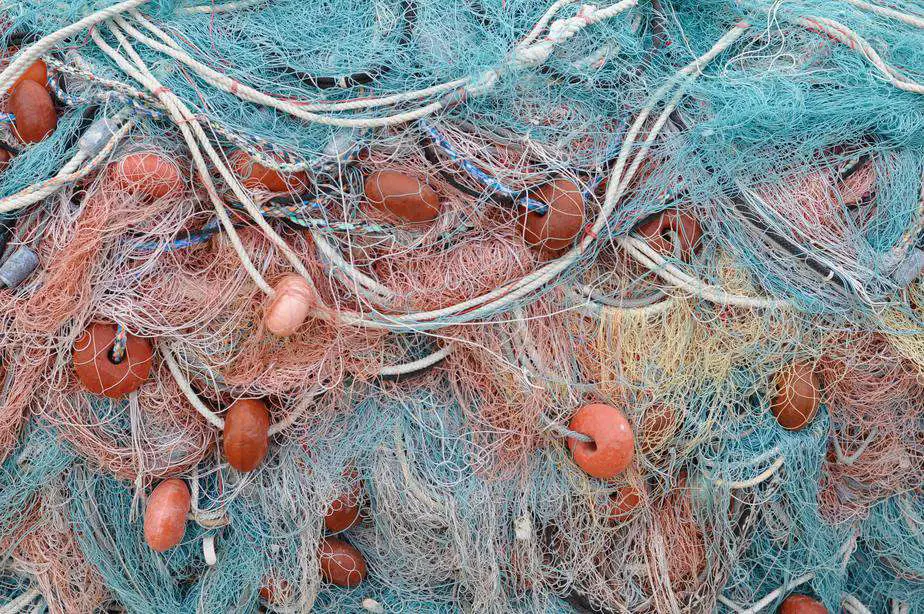
Depending on the type of knife you have, there are some downsides you’ll have to deal with. Thus, you should think carefully about what type of knife to buy and where you would like to carry it.
Large knives are the bulkiest and increase not only your weight, but the chances of getting tangled up in something. You’ll need to account for the extra weight when managing your buoyancy.
Many dive knives have a dull point, but not all. If your knife has a sharp tip, be extremely careful not to cut yourself or damage your equipment, particularly when holstering it.
One significant downside of carrying any dive knife is the maintenance required after every dive. Rusting and degradation is a common problem that can affect even the best dive knives if they aren’t properly maintained.
Additionally, dive knives require sharpening to stay effective. The blades don’t stay sharp for long, especially if you’re actually using it. You don’t want to discover that your knife is failing to do what it’s designed to do when you need it.
You might also need multiple cutting tools to cover every scenario, such as trauma shears or line cutters instead of a singular dive knife. This increases the amount of items you are carrying on a dive. A higher end dive knife can potentially play multiple roles such as by having a line cutter built in on the dull side of the blade.
How many divers carry a dive knife with them?
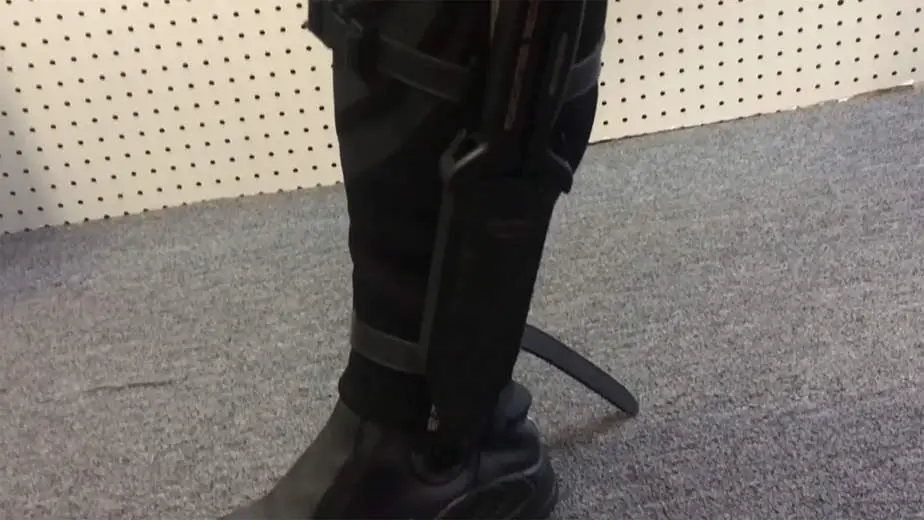
If you’re a recreational diver that is always diving with a large group, such as part of a guided tour or liveaboard, then you might not need to have your own dive knife because surely another diver would have one.
However, if you dive frequently, then that increases your chances of encountering situations where you might need them. Depending on the type of diving you’re doing, such as a solo dive, cave dive, or wreck dive, then a dive knife is a must-have.
Even as a recreational diver, you could easily come across underwater debris or an errant fishing line just floating around. This is a hazard for you and your fellow divers, but it’s also a hazard for marine life. If you notice this, a knife or cutting tool can help you do your part in keeping the ocean clean.
It’s fair to say that most holiday divers probably don’t need to carry a dive knife, and that means that a majority of divers won’t have one on their person. However, the need for one depends on the kind of diving you’re doing.
Those of you who are diving in more challenging locations where the visibility is lower should carry a dive knife as a precaution. You should recognize that if you get entangled in this situation, without a dive knife, help might not be able to arrive on time so you need to save yourself.
Do you need a dive knife specifically?
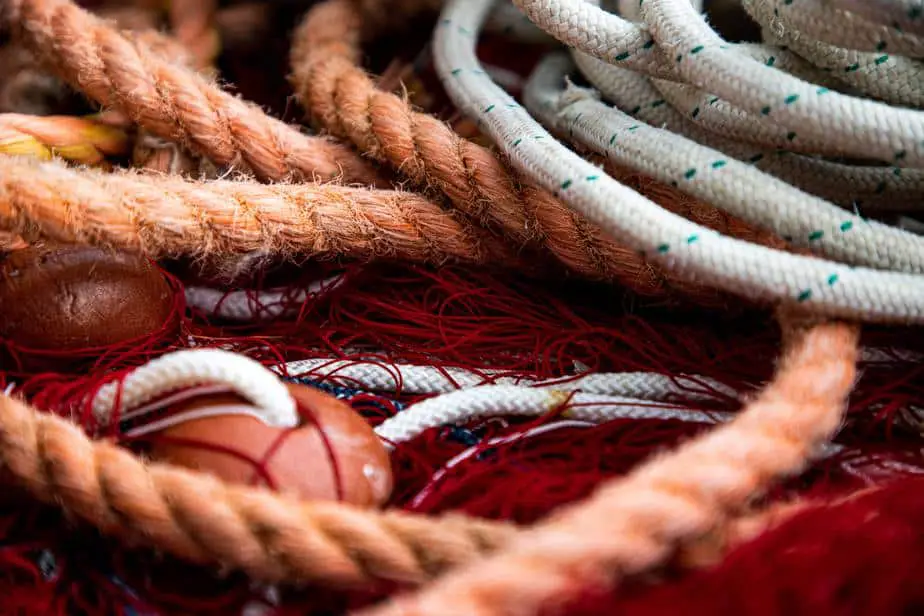
No, as we mentioned, there are other cutting tools such as trauma shears or line cutters you can use instead of a knife. As long as you have some kind of cutting tool, it can give you peace of mind and a lot of utility.
For your safety and your dive buddy’s safety, we think that all divers should have some kind of cutting tool on hand. Small knives and line cutters are relatively cheap and don’t occupy much space. There isn’t much reason not to have your own cutting tool.
Of course, if you’re part of a guided tour in clear tropical waters, then you might feel that it’s unnecessary to have a cutting tool. It’s up to you to make that decision. However, in general, we think it’s a sensible and practical thing to have.
Are there laws regulating dive knives?

Yes, and it’s worth double-checking the regulations of the area you’ll be diving in. In some places, a dive knife is mandatory, such as at cave diving sites. In others, knives are banned.
Even outside of diving, you’ll need to consider the local laws regarding whether you are allowed to carry a knife around.
You may not be allowed to carry a knife on your person, so keep your dive knife in your dive bag at all times. Consider also any age limitations to owning a knife.
When you’re travelling by plane, remember that knives are not allowed in carry-on bags, so they’ll need to be checked in. Most airlines also have a restriction on the size of the knife in the checked baggage, so read the rules carefully.
Parting words
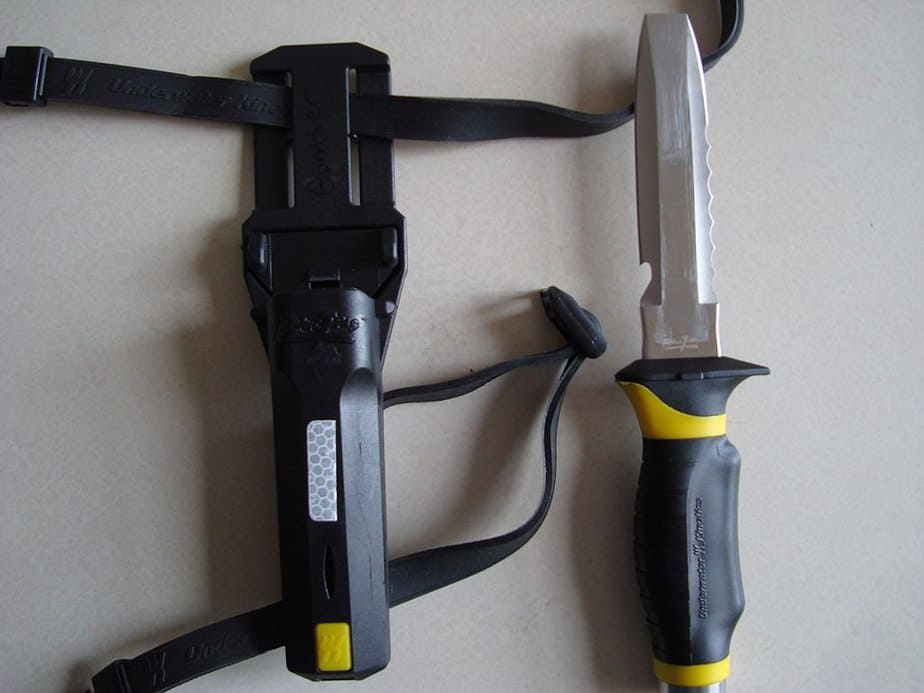
Dive knives or a similar cutting tool are useful for scuba divers to have in case you ever get entangled. You can also use it to rescue others, such as your dive buddy or animals trapped in a net. A mono-filament fishing line is strong enough that you cannot break it with just your hands, so if you ever get caught in one, you need a sharp cutting tool.
As for selecting a good dive knife, one of the most important factors to consider is the grip. New divers need to practice sheathing and unsheathing it so that they can do it with their eyes closed. When it comes time to use it, you don’t want to be fumbling around.
There are many options available, but for most divers, a small titanium knife with a blunt tip is satisfactory. Whether you get a straight or serrated edge, as long as it has a way to cut through a fishing line (e.g. it has a notch somewhere), then it will get the job done.
Whether it’s for your own personal safety or more altruistic reasons like cleaning up underwater debris or freeing trapped animals, a good underwater knife is definitely something to consider adding to your diving kit.

